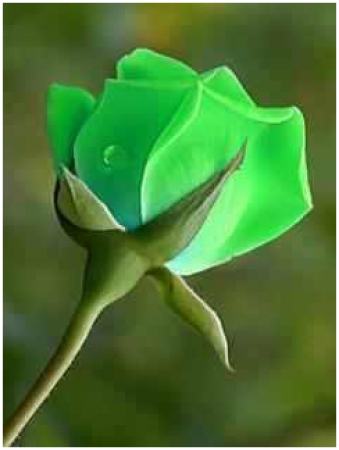Synopsis:
The export-oriented readymade garments (RMG) sector in Bangladesh, started its journey inlate 1970s as a small non-traditional sector of export. Bangladesh exported RMG worth only US$ 69 thousand when Reaz Garments exported its first consignment to USA in 1978.
By FY 2014-15 within a span of about three and half decades exports have gone up to US$25.49 billion. Over the past decade alone, the sector registered a phenomenal growth rate of around 14.78% per annum & solely contributes over 80% of country’s total export earning which is impressive by any standard.

Source: (BKMEA, Facts &Figures)
With significant improvement made in every aspect of quality control, fashion designing, technical expertise, merchandising as well as compliance, the sector is now getting recognition from all the concerned forums.
Now the RMG sector of Bangladesh is expected to retain its position in the global market & moving ahead to achieve $50bn export in 2021, the 50th anniversary of the Republic of Bangladesh (The Daily Sun, 2015) The garment manufacturing sector in Bangladesh has a new slogan: “$50 billion by 2021.” It’s an ambitious vision to reach $50bn in exports by 2021, the 50th anniversary of the Republic of Bangladesh.
Bangladeshi government and industry leaders are determined, and international partners, including the US government, have pledged to support their ambition.
To make the $50bn target, Bangladesh will have to grow exports by 11.87% annually. Over the past 10 years the garment industry has grown by an average of 14.78% annually – which apparently makes sense that $50bn by 2021 within reach.
Scope & Challenges:
The export-oriented readymade garments (RMG) sector in Bangladesh, started its journey inlate 1970s as a small non-traditional sector of export. Bangladesh exported RMG worth only US$ 69 thousand when Reaz Garments exported its first consignment to USA in 1978.
By FY 2014-15 within a span of about three and half decades exports have gone up to US$25.49 billion. Over the past decade alone, the sector registered a phenomenal growth rate of around 14.78% per annum & solely contributes over 80% of country’s total export earning which is impressive by any standard.

Source: (BKMEA, Facts &Figures)
With significant improvement made in every aspect of quality control, fashion designing, technical expertise, merchandising as well as compliance, the sector is now getting recognition from all the concerned forums.
Now the RMG sector of Bangladesh is expected to retain its position in the global market & moving ahead to achieve $50bn export in 2021, the 50th anniversary of the Republic of Bangladesh (The Daily Sun, 2015) The garment manufacturing sector in Bangladesh has a new slogan: “$50 billion by 2021.” It’s an ambitious vision to reach $50bn in exports by 2021, the 50th anniversary of the Republic of Bangladesh.
Bangladeshi government and industry leaders are determined, and international partners, including the US government, have pledged to support their ambition.
To make the $50bn target, Bangladesh will have to grow exports by 11.87% annually. Over the past 10 years the garment industry has grown by an average of 14.78% annually – which apparently makes sense that $50bn by 2021 within reach.
Scope & Challenges:
- As the just concluded financial year 2014-15 we have achieved RMG export $25.49 Billion with a shortfall of $1.4 billion from the government-set target of $26.89 billion with a growth rate of 4% whereas last year growth rate was around 14%.
- The average growth rate of 14.78% over the last ten years is skewed by a 43% jump in garment exports between FY 2010 to 2011(12.5 bn to 17.91bn) - a jump we’re unlikely to see again. Excluding that year, export growth averaged just 8.8% during the other five years.
- To meet their projections, Bangladesh will have to outperform the global apparel industry. The Asia-Pacific apparel export market is expected to grow by 9% annually through 2017, while the global apparel industry is expected to grow by just 5.1% through 2018. To achieve 10.9% growth, Bangladesh will have to gain market share from competitors like China and India all while they seek to grow their own garment exports. (Dhaka Tribune, 2015)
- Over the last three months, the World Bank estimated political unrest cost Bangladesh’s economy $2.2bn. Partially as a result, fiscal year 2014-15 began on a low note, with garment exports achieving an annualized growth rate of just 3.2%. The more Bangladesh struggles to meet near-term growth projections because of instability, the less confidence we can have that the garment sector will meet its long term targets consistently.
- In 2014, the World Economic Forum rated Bangladesh’s infrastructure 127th out of 144 countries evaluated. In order to accommodate an additional $25bn in RMG exports, the Bangladeshi government will need to make considerable infrastructure investments in the coming years.
- Our assessment is that a valuation of $50bn by 2021 is achievable, but far from guaranteed. To stay on track toward this goal, Bangladesh can’t afford the unsustainability that political unrest, poor working conditions and inadequate infrastructure bring to the garment sector.
- So to achieve 11.87% growth, Bangladesh will have to gain market share from competitors like China and India all while they seek to grow their own garment exports.


.jpg)

.jpg)








%2Bused%2Bin%2BTextile%2Band%2BApparels.jpg)

